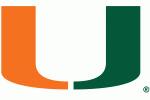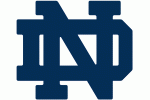It's been a crazy Championship Week across the NCAA, and parity ruled supreme across the land, leaving many college basketball fans scratching their heads as they attempt to fill out their brackets. Well, we at the Immaculate Inning have a treat for you: a complete breakdown of the recently NCAA bracket based on the log5 prediction system and Ken Pomeroy's efficiency ratings. I did this for the ACC tournament by painstakingly filling out an Excel spreadsheet and running the numbers essentially by hand. This time was a bit different.
The Method. Briefly, this simulation takes in the "Expected Winning Percentage" calculated by taking the number of points a team scores and allows and transforming it into a win percentage. Instead of using raw scoring figures, I'm using the metrics invented by Ken Pomeroy, which take the tempo of a game out of the equation- we're dealing with how efficient a team's offense or defense is. Next, using the log5 prediction method (linked above), we can calculate how often a team with a given winning percentage is likely to beat another team with a given win percentage. For example, a team with a .600 win percentage is projected to beat a team with a .400 win percentage 69.2% of the time.
How well a team does in the NCAA tournament is affected by three things: how good a team is, how good their opponents are, and how likely it is to see a particular opponent. So while Louisiana State may salivate at the possibility of playing Radford in the second round of the tournament, it's just not likely to happen. For the ACC tournament, I calculated discrete probabilities for each matchup. This is where I've done things a bit different. I have created a computer simulation (a script in the Python language) for the NCAA tournament, and then I run it a bunch of times. The outcome of each game is random, weighted by the expected winning percentage of each team. The result is not just another table of log5 projections, but is the result of 1 million simulated NCAA tournaments. It's how the tournament looks, "on paper."
So how did your favorite team fare in my simulations? Take a look at the spreadsheet below to find out! (It can also be accessed here for your sorting pleasure.)
The spreadsheet has tabs for each region; they are currently sorted by the "4" column, which is the chances that a given team will win "at least 4" games. That is, it is the chances that a team will win its region, advancing to the Final Four in Detroit. The other columns are similar, recording the percentage chance a team will win that many games. The difference is the "All Teams" tab, which is sorted by "Average Wins." This is the average number of wins a team accrued across the 1 million simulations. It ranges from Memphis (2.81 wins) to Chattanooga (0.02 wins).
Now that all the data is out there, what does it mean? I believe this data can tell us a great deal about how the tournament was set up by the committee, and who has the "hardest" and "easiest" roads to the Final Four and the national title. To begin, the finding that Memphis has not only the largest number of average wins, but also the highest chances of winning the title, is not surprising. Pomeroy's ratings place Memphis squarely atop the nation, led by an amazing team defense. John Calipari's team continues to get little respect nationally despite three straight regional final appearances. The statistics say there is a high probability they will make it four straight.
The South region has the most parity, with five teams winning four games (and the region) at least 10% of the time. Interestingly, top-seed North Carolina ranks third in Final Four appearances from this group, behind Oklahoma and Syracuse. However, if North Carolina does survive the region, they have by far the highest number of national titles (5.68%) from the South region.
Six teams made the national championship game in at least ten percent of the simulations: Connecticut, Louisville, Pittsburgh, Memphis, and Duke. Obviously, only one of the UConn-Memphis and Pitt-Duke pairs can make the title game, but I think it speaks to the lower overall level of performance from teams in the West and East regionals. Indeed, in those regions, the #1 and #2 seeds accounted for the regions' champion more than 40% of the time, while in the Midwest, Louisville and Michigan state came close (39.9%). The South, meanwhile, lags far behind- the champ was either UNC or OK just 32% of the time.
Among the lower seeds, three of the #6 seeds stand out as having higher than average chances of going to Detroit. West Virginia, ranked highly by Pomeroy all season, is the highest non-1-or-2 in terms of Final Four percentage, at 15.74%. Their first round matchup against Dayton ranks as one of the least upset prone games of the first round. How West Virginia fares in this tournament is perhaps a test case to the Pomeroy method-- how important are wins and losses, really, when you play pretty well in all those losses?
A similar case is UCLA, given a 6 seed in the East region despite having one of the best offenses in the country, statistically speaking. While their opening round game against VCU is no joke (and this Duke fan would know about that), they have the greatest chances of an Elite Eight appearance other than Duke and Pitt in this region. A third six-seed with high hopes could be Arizona State, in the apparently wide open South regional. Should ASU get past a tough Temple matchup in the first round, my simulator likes their chances against either Syracuse. Marquette is the odd six seed out in the simulations, with the lowest number of 1 win and 2 win simulations for six seeds.
I will have much more on these simulations in the coming days, eventually culminating in The Immaculate Inning Most Likely Bracket-- which of the 9 quadrillion possible baskets would Pomeroy's efficiency rating tell us to fill out?
If you have any suggestions on what kind of data analysis to do, how to improve the method, or if you'd like a copy of my Tournament Simulation script, comment here or shoot me an e-mail at mehmattski AT gmail DOT com. March Madness baby!
- News
- Scores
- Basketball
- Football
- Fantasy
- Features
- About Us
- Login



















